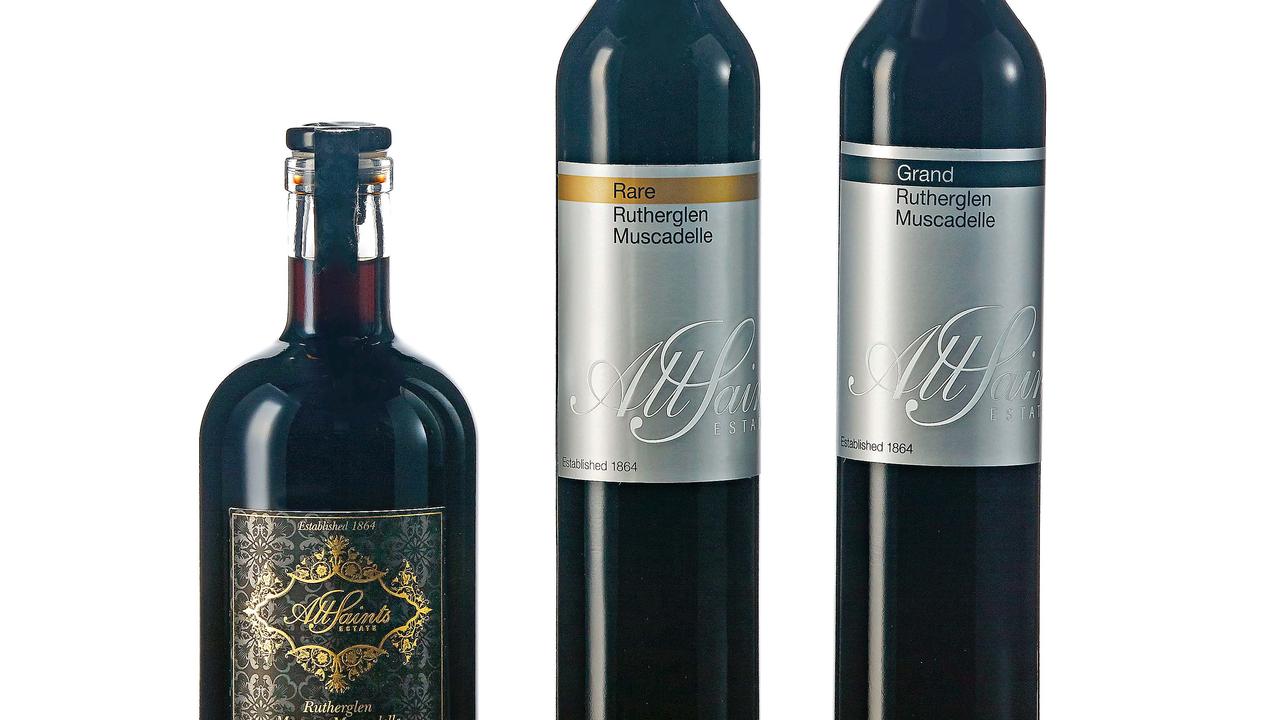Burning ambition
THE earthen walls of their charred home gave this couple an idea: to build the most fireproof, eco-friendly house in the country.
It felt like a scene out of Dante's Inferno: the sky of red embers, the ceaseless blast of hot, dry wind and the roar of giant flames devouring everything in their path.
Daryl Taylor and his partner Lucy Filor witnessed the Victorian town of Kinglake being devastated in the Black Saturday disaster of 2009. They tried to beat back the flames on their pregnant neighbour's home, to no avail, while their 11-year-old daughter Maggie huddled beneath a pile of dampened cushions and bedding. Then Taylor spent two gruelling 10-hour sessions desperately trying to save their own single-storey, earth-brick cottage, using more than 10,000 litres of water attempting to extinguish the blaze.
The next day, exhausted and numb, the couple stood before the skeleton of what was once their home. Timber window and door frames were charred and smoking; roof insulation hung from the ceiling like a macabre curtain. All that remained were the fortress-like earth-brick walls, dusted in black soot. It was from this dramatic sight - and from his earlier reading about a certain type of house that is uniquely fireproof - that Taylor developed an idea.
Three years after the Black Saturday firestorm that claimed 173 lives in Victoria, Taylor is about to put that idea into action. The 46-year-old, who has worked in public health and local government, is about to build what he claims will be the most fire-resistant and eco-friendly home in Australia. The remains of the original earth-brick cottage will be incorporated into a new, U-shaped "earthship" - consisting of earth-rammed tyre walls (known for their great structural strength and fire resistance) and a double-glazed greenhouse on the northern facade to catch the sun - for which Taylor and Filor have budgeted $260,000. The completed home will outperform the Bushfire Attack Level (BAL) building code and is well equipped to withstand a repeat of the Black Saturday disaster - or so Taylor hopes.
Later this month a team of earthship builders from the US state of New Mexico will arrive in Kinglake to construct it on the couple's 0.2ha block, with the help of some enthusiastic locals. The experts will show them how soil is compacted into the tyres and assembled into fortress-strong walls (each tyre can weigh as much as 135kg), and how "waste" can be reconstituted into building materials. "Throughout the build we'll provide 30 people with the opportunity to work alongside the American construction crew to give them the skills to build other earthships in Australia," says Taylor. While a couple of other prototype earthships have already been constructed in this country, this is the first to be council-approved.
All this against the backdrop of a community that's still coming to terms with the bushfire disaster. Family break-ups have become common in Kinglake and there has been a recent uptick in the number of people deserting the area. "There have been so many issues - insurance battles, job losses, business closures, financial hardship, endless paperwork and red tape, post-traumatic stress, drug and alcohol issues," reflects Filor, a 37-year-old teacher and writer. Taylor says it's usually the men who've wanted to stay and rebuild while their partners have wanted to leave. Hovering over everything, the couple explain, is the continuing fear of another blaze.
Taylor insists the earthship will offer a level of fireproofing unmatched by even the most advanced fire-resistant materials used in conventional construction. "Materials can be resistant to 800C or to 1500C, but when that limit is exceeded, your only line of defence is gone," he says. "The building's integrity is breached and then quickly collapses." If another bushfire strikes Kinglake, they'll be able to roll down steel-reinforced blinds to shield the windows that span its entire northern side.
The earthship design is ideal for normal Australian conditions, too: it will boast a steady indoor temperature of about 21C regardless of the conditions outside - without using any artificial heating or cooling. Add to that a host of other eco-friendly features, such as rainwater capture, solar panels, and the reuse of waste water to irrigate plants, and you have a home that is off-the-grid self-sufficient.
Taylor, who grew up in a small dairy town on the Murray River, is convinced the earthship idea could catch on in Australia. Construction costs are relatively low, he points out, and lighting and power bills are a fraction of those for conventional homes. He is also determined to show that earthships can be as architecturally impressive as they are eco-friendly, acknowledging that some of the early ones look like they've stepped straight out of a 1960s acid trip. Earthships do seem to be drawing increasing cred in style circles: in one recent episode of TV's Grand Designs, self-build guru Kevin McCloud featured a variation of an earthship in the south of France. "I find it almost impossible not to like this house," McCloud declared. "It really measures up to its original inspirations. Despite its quiet beauty it is built with waste."
Of course, fireproofing, structural integrity and eco-friendliness are one thing, but they don't necessarily add up to making a house feel like a home. There is an earthship estate in the New Mexico desert, and earthship houses are sprinkled across the UK and Europe, but although they are becoming more popular they are yet to capture the imagination of the mainstream. And the most basic question underpinning whether earthships will ever take off in Australia is this: what's it really like to live in one?
On a windswept estate in the New Mexico desert, near the landmark Rio Grande Gorge Bridge, the outside temperature is near zero and it's about to snow. Inside the "Phoenix" earthship, however, it's a cosy 21 degrees. An ornate fireplace that looks like it has come from Tolkien's Middle-earth contains logs that are quietly crackling away opposite a flat-screen television. A cement-rendered tub-for-two is the centrepiece of a bathroom that sparkles in the reflected light of dozens of coloured bottles used to build the internal walls. A greenhouse spanning the full length of the building is teeming with tropical and sub-tropical plants. Bananas, figs and tomatoes are framed with hanging gardens of leafy vegetables and there is an internal fish pond. All appear in stark relief against the harsh outside terrain.
There's something comforting about sleeping in the cave-like chambers, under low-voltage lights, behind a series of glass air-locks that maintain the temperature. The next morning, despite the frigid conditions outside, the floors are warm enough for my bare feet and the air is fresh from the building's natural ventilation. Breakfast is cooked on a gas stove from milk, butter and eggs stored in a 12-volt refrigerator.
But it's what you can't see that matters. There is nothing to suggest the backbone of the house comprises a wall of earth-rammed, recycled tyres. Rainwater is harvested from the roof and stored in large underground tanks. The gardens run on filtered water that's previously been used to wash and bathe. Weight-balanced skylights can be opened and closed with pulleys to allow a flow of fresh air, which has been drawn through tubes buried beneath the soil to ensure the correct temperature.
I've come here to interview the grandfather of earthships, US architect Mike Reynolds, who back in the early 1970s built his first home from recycled materials, including beer cans wired together as bricks. Today he's one of America's most radical proponents of eco-friendly domestic architecture, maintaining that the waste produced by the construction industry - building homes that guzzle increasing amounts of energy with modern-day comforts such as air-conditioning - is no longer sustainable. Reynolds claims his solar-powered homes, with their own natural ventilation systems, can operate off the electricity grid, meaning no power bills. And with rising energy prices and the threat of climate change, his ideas - once dismissed as "survival bunkers" for radical greenies - are catching on like never before. The sales pitch for his company Earthship Biotecture is that utility bills for an earthship will be less than $100 a year or the company will pay the difference, and from all appearances it is enjoying brisk business.
No matter what the finishes - and everybody's taste is different - Reynolds says the same principles are used for heating and cooling. In winter, the sun's heat is stored in the earth during the day to keep the building warm at night; in summer, sunlight is blocked from entering the building and air is moved around for cooling. "We are just eliminating the extreme heat or extreme cold and trying to do it with no fuel," says Reynolds. "We do it all passively with natural phenomena instead of fuels." A wiry 65-year-old with a shock of long grey hair, Reynolds has made several trips to Australia and is directly involved in the Kinglake build. He claims his headquarters in New Mexico is getting between 15 and 20 enquiries a day from Australia. "There is a screaming amount of interest in sustainable stuff down there and I think we are probably the only outfit that hits everything at once," he says. "There are people recycling, people using solar energy, people harvesting water or messing with sewage, but we are putting it all together into one packaged design. Our purpose is to illustrate to high-end people you can be off the grid, carbon-zero and still be as fancy as you want."
He insists, too, that going green is not just for the wealthy. In the US, low-income green housing projects have shown that eco-friendly buildings save more money for the people who need it most. And the earthship idea is proving to be a godsend for areas recently struck by earthquakes, floods and tsunamis, where the wreckage from destroyed buildings can be immediately recycled into new homes rather than laboriously carried away to become landfill. In 2004, Reynolds travelled to the Andaman Islands in the Indian Ocean to show the locals how to build earthships using garbage and debris from the tsunami wreckage - and how to harvest clean water from the monsoon rains. His earthships have been constructed with council approval in many states of the US as well as in Canada, Mexico, the Netherlands and France.
Daryl Taylor is busy searching for second-hand materials. He's looking for used telegraph poles, asking supermarkets to give him used glass from refurbishments ("it is high-quality double and triple glazing that is now ending up in dumpsters") and is sourcing - of course - used tyres. The plans for Taylor and Filor's eco-friendly, fire-resistant dream house have been reviewed for structural integrity by CSIRO fire safety structural engineer Ian Bennett. "I think it has a lot going for it," Bennett says. "But it's not the sort of architecture my wife would like."
Taylor well remembers the day he introduced Bennett to Mike Reynolds. "I think Ian thought it was a freak show. He was visibly uncomfortable," Taylor says. "We sat him down and fed him wine and cheese and nuts and fruit inside what probably looked like a Bedouin tent. He was outside his comfort zone." Bennett admits to being "pretty sceptical" when he first met Reynolds, but acknowledges "the more I looked at it, the more I thought it was pretty reasonable".
Taylor says that earthships have been on his radar for more than two decades but the catalyst was the horror of the Kinglake fires - and recognising that the only part of his home that survived the blaze was the earthbrick walls. What's more, he's prepared to put his money where his mouth is, planning to establish a Biotecture Academy - named after Reynolds' Biotecture company - to kickstart the skills transfer necessary to spawn a generation of Australian earthships.
According to Reynolds, the market for earthships is changing. "It used to be young hipsters but now it is all over the place," he says. "Old women, old men, young couples, yuppies, everybody is a little worried right now. A lot of people call this a survival house."
For his part, Taylor is keen to foster the evolution of earthships to suit Australian conditions, whether it be in snowfields, fire-prone bushland or outback indigenous communities. He knows it will take time to convince much of the mainstream, but when you've been through something like Black Saturday, it tends to revolutionise your thinking. And he hopes that the proof of his ideas will soon be before his eyes - in the form of a new home arising from the ashes.




